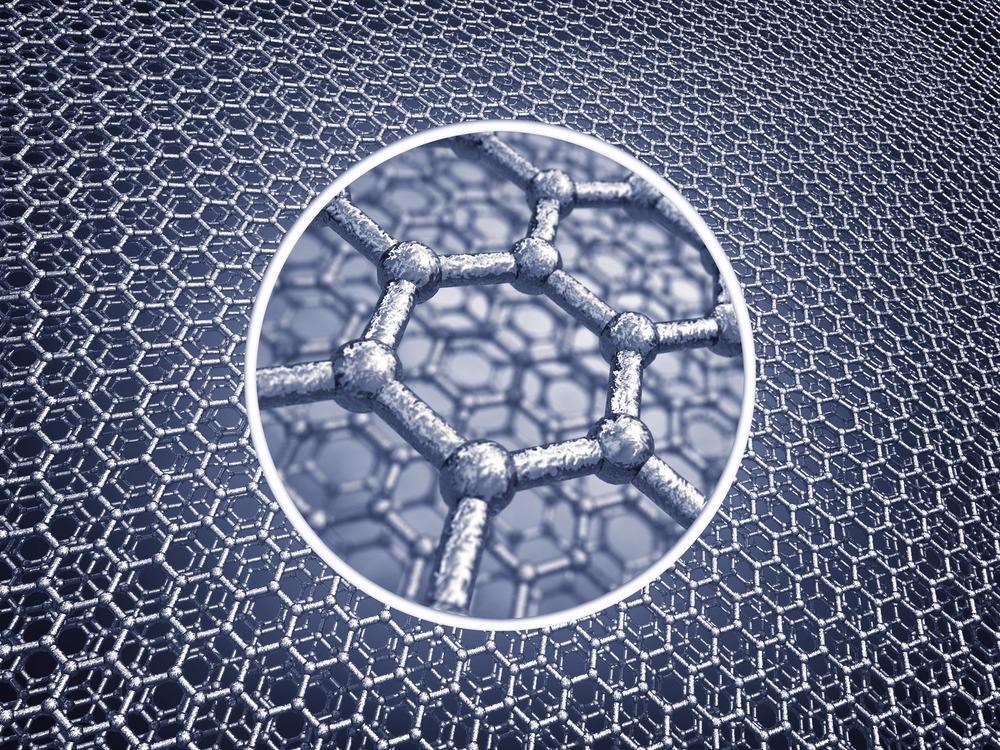In a study printed in the journal ACS Applied Materials & Interfaces, chemical vapor deposition approach was used to produce a nanometric hexagonal boron nitride (h-BN) coating on the cambered sides of every fiber in graphene glass fiber fabric (GGFF).

Study: Flexible Full-Surface Conformal Encapsulation for Each Fiber in Graphene Glass Fiber Fabric against Thermal Oxidation. Image Credit: nobeastsofierce/Shutterstock.com
Encapsulating Carbon-based Materials can Improve Oxidation Resistance
Owing to their superior thermal and electrical characteristics, carbon-based materials like carbon fiber, graphene, and carbon nanotubes, are commonly employed in electronic systems.
The chemical and thermal stabilities of carbonaceous electronic systems are pivotal prerequisites for their long-term steady operation.
On the other hand, these materials face the difficult problem of oxidation, particularly when operating at high temperatures. Encapsulation is among the most effective methods for increasing the oxidative resistance of materials via oxygen isolation.
Pros and Cons of Different Encapsulating Materials
Thanks to their accessibility, flexibility, and affordability, organic polymers like polyurethane, polypropylene, polyethene, and poly-(vinylidene chloride) are commonly utilized for encapsulating devices. Their low thermal stabilities, however, restrict their usage in settings having temperatures greater than 200 °C.
Ceramic encapsulation materials have great thermal stability, but their poor conformability and flexibility may readily induce fractures in the encapsulating films, particularly after repeated tensile and bending stresses, which would amplify oxygen penetration and hasten performance deterioration of the system. As a result, an encapsulating (or coating) material that is conformal, flexible, and thermally stable is needed for use in electronic systems.
With its excellent chemical and thermal stability, hexagonal boron nitride (h-BN) is considered a suitable encapsulation material against oxidation for carbon-based electronic systems.
What is the Best Approach for Coating with Hexagonal Boron Nitride?
The deposition of h-BN layers on material surfaces can be accomplished via pulsed laser deposition; however, it is hampered by greater expenses and poor crystal quality. Another alternate encapsulating strategy is to wrap material surfaces with h-BN powder dispersion. Unfortunately, large area homogeneity is hard to attain, and the thick h-BN encapsulation films frequently influence the inherent elasticity of the material to be enclosed.
Mechanically exfoliating from bulk h-BN and distributing from CVD-grown thin-layer h-BN are both successful methods for obtaining good quality h-BN atomic films, which have been extensively employed to enclose different devices based on 2D materials. Nonetheless, both techniques are restricted in scalability because of the significant difficulties in realizing large-area intact exfoliation or transference.
Complete-surface, conforming encapsulation for delicately structured items, such as complete-surface encapsulation for fiber-like materials, poses more complications and needs for encapsulation methods and has not been adequately addressed by existing methodologies.
Bringing out the Best of Graphene Glass Fiber Fabric
Lately, graphene glass fiber fabric (GGFF), a sophisticated graphene-based electrothermal material, has been successfully created. GGFF demonstrates remarkable electrothermal behavior by incorporating graphene's high conductance of heat and electricity with the glass fiber's outstanding mechanical strength and elasticity.
As a result of oxidation, graphene cannot exist at temperatures over 500 °C in the environment. Therefore, the GGFF electrothermal system's long-term steady operating temperature is severely constrained.
Effective encapsulating techniques for carbon-based electronic systems, particularly those with complicated architectures including this fiber-like GGFF, are promptly required, which cannot be provided by typical exfoliating or transferring processes. The packaging of pliable electronics without sacrificing their elasticity complicates the encapsulation process even further.
Highlights of the Study
In this study, aimed toward the GGFF electrothermal device, on-site CVD production of nanometric h-BN films was used to provide flexible, complete-surface, conforming encapsulation for every fiber in the sizable fabric.
The h-BN-enclosed GGFF (h-BN/GGFF) demonstrated improved resistance to oxidation in the environment, with sustained heat durations up to one order of magnitude greater than plain GGFF without compromising the excellent elasticity and strength of the fabric. The h-BN coating had no effect on GGFF's remarkable infrared radiation capacity, which is a crucial feature used in radiative heat control.
Theoretical models identified additional processes for h-BN/ GGFF's increased resistance against oxidation. The coating of h-BN may dramatically enhance the adsorptive energy and decrease the adsorbing life of oxygen, both of which are important in oxidizing graphene.
This research presented a flexible, complete-surface, and conforming encapsulation approach aimed at the fiber-like graphene electrothermal system, which can be scaled up and extended to other carbon-based materials and two-dimensional materials, including devices with complex shapes, promoting the advancement of nanoscale electronics in harsh environments.
Reference
Jiang, J., Cheng, Y. et al. (2022). Flexible Full-Surface Conformal Encapsulation for Each Fiber in Graphene Glass Fiber Fabric against Thermal Oxidation. ACS Applied Materials & Interfaces. Available at: https://doi.org/10.1021/acsami.2c02979
Disclaimer: The views expressed here are those of the author expressed in their private capacity and do not necessarily represent the views of AZoM.com Limited T/A AZoNetwork the owner and operator of this website. This disclaimer forms part of the Terms and conditions of use of this website.